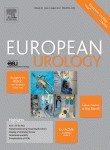Soukup V, Babjuk M, Bellmunt J, Dalbagni G, Giannarini G, Hakenberg OW, Herr H, Lechevallier E, Ribal MJ. Eur Urol. 2012 Aug;62(2):290–302. doi: 10.1016/j.eururo.2012.05.008. Epub 2012 May 12. IF: 8.493

Department of Urology
Abstract
CONTEXT: Follow-up of patients treated for bladder cancer (BCa) is of great importance for both non-muscle-invasive BCa (NMIBC) and muscle-invasive BCa (MIBC) because of the high incidence of recurrence and progression. The schedule and methods of follow-up should reflect the individual clinical situation. OBJECTIVE: To evaluate the existing evidence for intensity and duration of follow-up recommendations in patients after surgical treatment of BCa. EVIDENCE ACQUISITION: We searched the Medline, Embase, and Cochrane databases for published data on the follow-up of patients with NMIBC and MIBC after radical cystectomy (RC). EVIDENCE SYNTHESIS: Follow-up in patients with NMIBC is necessary because of the high probability of tumour recurrence and the risk of progression. Cystoscopy plus cytology are the standard methods for follow-up. Cystoscopy should be done 3 mo after the transurethral resection in every patient, and the frequency after that depends on the individual recurrence/progression risk. Cytology should be used as an adjunctive method to cystoscopy in intermediate- and high-risk patients. None of the currently available urinary markers or imaging methods can substitute for cystoscopy-based follow-up. High-risk NMIBC patients require regular lifelong upper urinary tract monitoring. Follow-up in MIBC is based on the fact that early detection of recurrence after RC allows for timely treatment with the aim of improving outcomes. Patients with extravesical and lymph node-positive disease should have the most intensive follow-up because of the highest recurrence risk. Routine upper urinary tract imaging is advisable for all patients and should continue in the long term. Follow-up also allows for early detection of urinary diversion-related complications, the rate of which increases with time. CONCLUSIONS: Follow-up in BCa is necessary for diagnosing recurrence and progression, as well as for evaluating complications after radical treatment. Since randomised studies investigating the most appropriate follow-up schedule are lacking, most recommendations are based on only the retrospective experience. Nonetheless, reasonable recommendations can be made until further prospective randomised studies testing different follow-up schedules have been performed.
-Michaela Kotrová-
